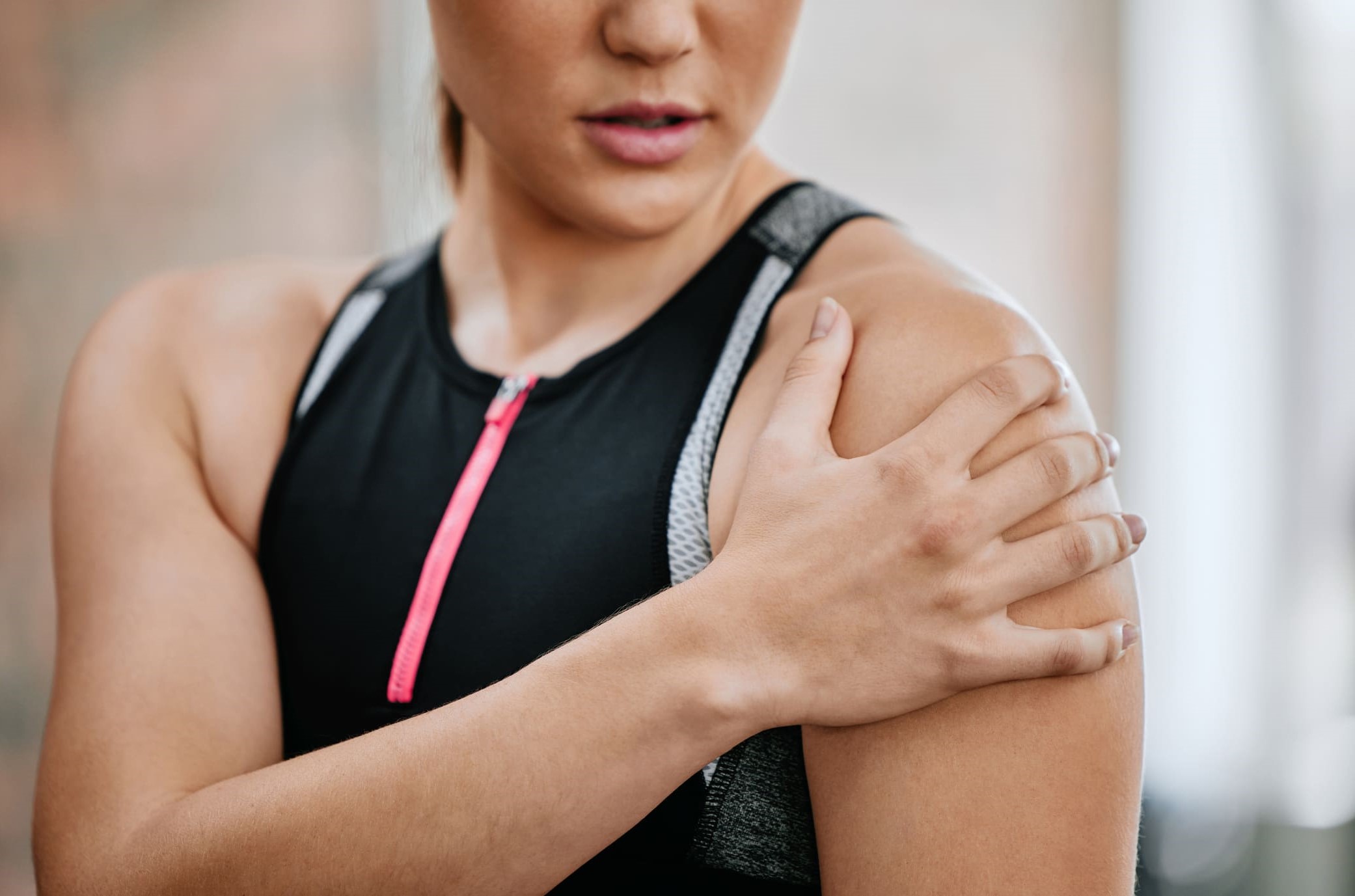Schedule An Appointment With Us
Are Your Symptoms Affecting Your Quality Of Life?
Consult our MOH-accredited orthopaedic surgeon for an accurate diagnosis & personalised treatment plan.
MBBS
MRCSEd
MMED (Ortho)
FRCSEd

Shoulder arthritis is characterised by inflammation and degeneration of the shoulder joint, a ball-and-socket structure enabling a wide range of motion. This condition comprises two primary bones, the upper arm bone and the shoulder blade, connected at the joint. In a healthy shoulder, cartilage surrounds and lubricates this joint, preventing bone-to-bone friction. In shoulder arthritis, this cartilage deteriorates, leading to pain, stiffness, and swelling. These changes can impact arm mobility and, consequently, a person’s quality of life.
There are five major types of arthritis affecting the shoulder:
Osteoarthritis results from the natural wear and tear of cartilage. Factors contributing to this include ageing, overuse, prior injuries, and genetic predisposition. It commonly affects individuals over 50.
An autoimmune disease where the immune system mistakenly attacks joint linings, causing inflammation, pain, and joint damage.
Develops following severe shoulder injuries like fractures and dislocations.
This condition arises when tears in the rotator cuff tendons lead to misalignment of bones and increased friction within the shoulder joint.
Caused by disrupted blood supply to the joint, leading to bone tissue death and joint deterioration. Avascular necrosis may be caused by factors such as steroid use, alcohol abuse, trauma, or certain other medical conditions.
Shoulder arthritis arises from a combination of factors, which may vary depending on the specific type:
Pain is a common symptom for those with shoulder arthritis. It is often exacerbated by activities that stress the shoulder. The intensity of pain may increase over time and, although it is typically localised around the shoulder, can vary in exact location based on the affected joint and arthritis type.
Other symptoms include:

Diagnosing shoulder arthritis involves several steps:
Various non-surgical treatments are available for shoulder arthritis. These focus on symptom management and slowing the progression of the disease.
Rest and Activity Modification |
Initially, the shoulder specialist may suggest rest and activity modification to allow the joint to recover. Patients should avoid or modify activities that exacerbate their symptoms. This helps alleviate symptoms and prevents further damage to the joint. |
Nonsteroidal Anti-Inflammatory Drugs (NSAIDs) |
These drugs are commonly prescribed to reduce pain and inflammation associated with arthritis. They can be effective in managing symptoms, especially during flare-ups. |
Physical Therapy |
Shoulder specialists may suggest tailored exercises and stretches to maintain and improve shoulder function. Physical therapy focuses on strengthening the muscles around the shoulder, enhancing flexibility, and expanding the range of motion. Heat or cold therapy may also be part of the treatment, providing additional relief. |
Assistive Devices |
Some patients may benefit from the use of braces, slings, or splints. These devices can offer support to the affected shoulder, helping to stabilise the joint, reducing pain, and facilitating movement during daily activities. |
Corticosteroid Injections |
Injecting corticosteroids directly into the shoulder joint can provide temporary relief from pain and inflammation. This treatment is typically considered when other non-surgical methods have not been effective and is not seen as a long-term solution. |
When non-surgical treatments for shoulder arthritis are not effective, surgical intervention may be considered. Each option is tailored to the individual’s condition and needs, aiming to reduce pain and improve joint function.
This minimally invasive surgery involves small incisions and the use of a camera to debride (clean out) the joint. It’s often used for less severe cases.
A procedure where only the damaged surfaces of the joint are replaced, preserving more of the patient’s natural bone.
In severe cases, the damaged parts of the shoulder joint can be replaced with artificial components. A total shoulder replacement or a partial replacement can be conducted, depending on the extent of the damage.
Schedule An Appointment With Us
Consult our MOH-accredited orthopaedic surgeon for an accurate diagnosis & personalised treatment plan.
Preventing shoulder arthritis involves several proactive measures:

MBBS
MRCSEd
MMED (Ortho)
FRCSEd
With over 20 years of experience, Dr Poh Seng Yew is an orthopaedic surgeon specialising in hip, knee, shoulder and elbow surgery, sports medicine, and trauma surgery.




Weekdays: 9.00am – 5.00pm
Saturdays: 9.00am – 1.00pm
Sundays and Public Holidays: Closed
Please leave us a message, and we will be in touch with you shortly.
Recovery time varies, depending on the severity and treatment approach. For mild arthritis treated with rest, activity modification, or anti-inflammatory drugs, recovery could be a few weeks. Physical therapy may lead to improved motion and reduced pain over several weeks to months. The duration also depends on each patient’s healing ability.
Avoid activities that exacerbate shoulder pain or strain the joint. This includes repetitive movements, lifting heavy objects, or any action causing discomfort. Consult with our shoulder specialist for personalised guidance on specific activities to avoid.
Try to sleep in a position that minimises stress on the shoulder. Using a supportive pillow and avoiding sleeping on the affected side can reduce discomfort.
Exercises focusing on low-impact strengthening and flexibility of the shoulder muscles can be beneficial. These may include gentle stretching and range-of-motion exercises. Reach out to our shoulder specialist for a tailored exercise plan suited to your needs.